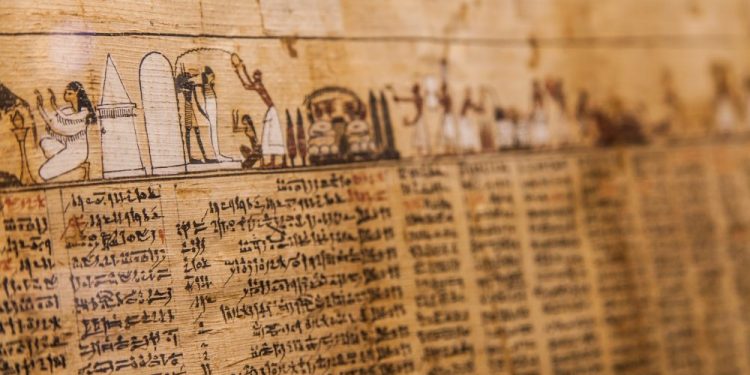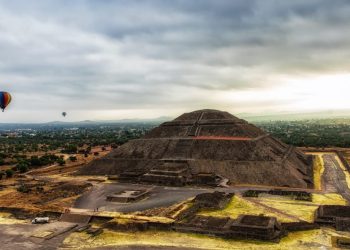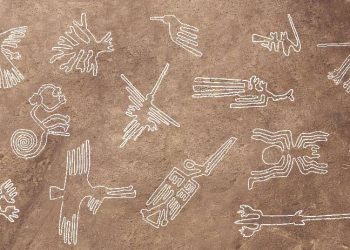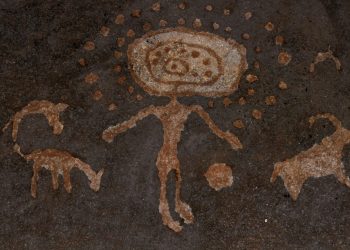Thousands of years ago, people around the world sought out the way they could express themselves. Some did it by carving intricate glyphs on stones; others wrote on the arid landscape like Nazca. But Egypt had papyri plants. Papyri are believed to have been used in ancient Egypt as far back as the Frist Dynasty, when the first series of Egyptian Kings ruled over unified Egypt, around 3,100 BC, when the First Pharaoh, Narmer, ruled over Upper and Lower Egypt, marking the beginning of the Early Dynastic Period.
Egypt’s lush and fertile Nile Delta was abundant with papyrus planet, and the ancient Egyptians made sure to use it the best pay they could. Apart from being used as a writing material, the ancient Egyptians made use of the plant in many different ways, including the construction of artifacts such as reed boats, mats, robes, sandals, and baskets, turning the papyrus plant into one of the most used raw materials of ancient times.
Evidence of manufacturing papyrus can be traced back to the fourth millennium BC. The earliest known papyrus example was excavated between 2012 and 2013 at an ancient Egyptian harbor on the Red Sea coast, at the ancient town of Wadi al-Jarf. Thanks to the fact that the ancient Egyptians were such meticulous record keepers, we’ve come across a series of extremely important papyri from Egypt spanning back thousands of years.
Some of these ancient texts have changed our understanding of history, mathematics, and even the building of the Great Pyramid of Giza. Here are five history-changing papyri discovered in Ancient Egypt.
Cairo Calendar–The Variability of Algol
One of the most amazing papyri discovered from ancient Egypt is the Cairo Calendar, dated between 1244–1163 BC. A study published in PLOS ONE argues that this ancient Egyptian calendar is the earliest record of a distant alien star’s variability.
According to reports, the 3,200-year-old papyrus records the variability of Algol, a three-star system –Beta Persei Aa1, Aa2, and Ab–located 92.25 light-years from Earth. This is fascinating since the ancient Egyptians could see the star without using Telescopes but apparently played a crucial role in their religious calendar.
Researchers from the University of Helsinki, Finland, have studied the ancient texts and matched the activities of Hours to the 2.867-day cycle of Algol, strongly suggesting that the ancient Egyptians were fully aware of the existence of the stars and even adapted and altered their calendars to match the star’s variability.
“Until now, there were only conjectures that many of the mythological texts of the Cairo Calendar describe astronomical phenomena,” explained one of the team, Sebastian Porceddu. “We can now unambiguously ascertain that throughout the whole year, the actions of many deities in the Cairo Calendar are connected to the regular changes of Algol and the Moon.”
The Abusir Papyri
The Abusir Papyri are the largest papyri texts dating back to the Old Kingdom in ancient Egypt. Discovered in 1893 near Abusri in northern Egypt, the ancient documents are believed to date back to the 24th century BC. The first documents were discovered during illegal excavations at Abusir. They are one of the oldest surviving papyri and are badly damaged and fragmented. Considered by archeologists as one of the most important administrative documents of the 5th dynasty, the ancient papyri were recovered from the temple complexes of Neferirkare Kakai, Neferefre, and Queen Khentkaus II.
The papyri translation in the 1970s led to the discovery of the funerary monument of Neferefre with an additional 2,000 separate pieces of papyri. The Abusir Papyri give detailed information regarding the running of a royal mortuary temple and include duty records for priests, records of temple equipment, and accounts of daily offerings to the two solar temples at Abu Gorab, north of Abusir, Written in columns that were divided into three horizontal registers, the ancient papyri list dates and names of officials, the names of recipients, the kind of meat cuts supplied, and allocations of grain.
The Rhind Mathematical Papyrus
Considered one of the best examples of ancient Egyptian mathematics, the Rhind Mathematical Papyrus was named after Alexander Henry Rhind, a Scottish antiquarian, who purchased the papyrus in 1858 in Luxor, Egypt. Like many other ancient artifacts from Egypt, this papyrus, too, was discovered during illegal excavations. Recovered near the Ramesseum, it is believed that the papyrus dates back to around 1550 BC. The first sections of the papyrus, copied by the scribe Ahmes from a now-lost text from King Amenemhat III’s reign, consists of reference tables and a collection of 21 arithmetic and 20 algebraic problems. The ancient papyrus, which measures 33 centimeters tall and consists of several parts, which makes it more than 5 meters long, records 91 mathematical problems.
Berlin Papyrus 6619
This is perhaps one of the most important mathematical texts from ancient Egypt. The Berlin Papyrus 6619 is an ancient document from around 1990–1800 BC and is one of the most important sources of ancient Egyptian Mathematics. One of the two mathematical problems written down on the papyrus has been interpreted as the ultimate evidence that ancient Egyptians were familiar with the Pythagorean theorem. The first problem on the papyrus states: “…the area of a square of 100 is equal to that of two smaller squares. The side of one is ½ + ¼ the side of the other.”
The Wadi al-Jarf and the Diary of Merer
Without a single reason for doubt, the Wadi al-Jarf is one of the most important ancient papyri ever discovered. Discovered at a site considered the oldest known artificial harbor on the planet’s surface, the port of Wadi al-Jarf was first identified in 1832 by J. G. Wilkinson and then rediscovered in the 1950s during an archeological expedition by French researchers.
The harbor at Wadi al-Jarf dates back to the Fourth Dynasty of Egypt, around 4,500 years ago, and researchers have discovered more than one hundred ancient anchors and storage jars at the site. But in addition to that, one of the most important discoveries made on the site was a large number of papyri fragments that provided unprecedented insight into people’s lives during Egypt’s Fourth Dynasty. Radiocarbon dating has revealed the papyri as the oldest in Egypt.
Among the artifacts discovered at the site, ten papyri were especially well preserved and of great importance. Most of the ancient documents date back to Khufu’s reign and describe the central administration providing food and supplies to Egyptian travelers. But of all the documents, one stands out as the most important: The Diary of Merer. Merer, as it turns out, was one of the officials involved in the building process of the Great Pyramid of Khufu.
This fact makes the papyrus one of history’s most important archeological discoveries. It is the only known document from ancient times that mentions the pyramid-building process. The diary translation allowed researchers to reconstruct three months of the life of Merer, obtaining unprecedented new insight into the life of people in the Fourth Dynasty.
The diary revealed how the stone was transported from the Tura quarry to Giza. Although the papyrus offers incredible information dating back to Khufu’s reign, experts stress that the diary does not define where the stones were to be used or for what end. The consensus among experts is that the stones quarried at Tula were used for cladding the outside of the Great Pyramid of Giza. Archaeologist Zahi Hawass describes the Diary of Merer as “the greatest discovery in Egypt in the 21st century.”
Join the discussion and participate in awesome giveaways in our mobile Telegram group. Join Curiosmos on Telegram Today. t.me/Curiosmos











